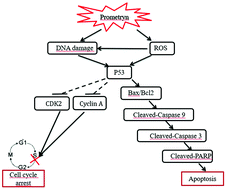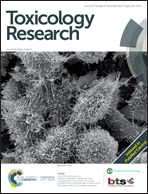Prometryn induces apoptotic cell death through cell cycle arrest and oxidative DNA damage
Abstract
Prometryn is a slightly to moderately toxic herbicide belonging to the triazine family of herbicides, which are widely used in agriculture to control the growth of various weeds. Although many studies have shown that triazine herbicides have carcinogenic potential in humans, the cytotoxic effects of prometryn on human cells, and the mechanisms underlying these effects, are not yet fully understood. The lung is one of the most important organs where there is accumulation of environmental pollutants. The aim of this study was to determine the cytotoxic effects of prometryn on normal lung cells using the human bronchial epithelial cell line BEAS-2B. We found that treatment with high concentrations of prometryn arrested BEAS-2B cell growth in the S phase, while at low concentrations the cell cycle was not affected. Furthermore, we observed changes in the expression levels of cyclin-dependent kinase 2 (CDK2) and cyclin A that were consistent with the induction of cell cycle arrest in BEAS-2B cells exposed to prometryn. We also observed the increased formation of intracellular reactive oxygen species (ROS) in BEAS-2B cells, suggesting that this cell line is sensitive to prometryn. Finally, prometryn induced DNA double-strand breaks in BEAS-2B cells. In conclusion, prometryn affected key molecules involved in cell cycle regulation, induced oxidative stress, and induced DNA damage in BEAS-2B cells, which may shed light on the mechanism by which prometryn promotes lung cancer development.



 Please wait while we load your content...
Please wait while we load your content...